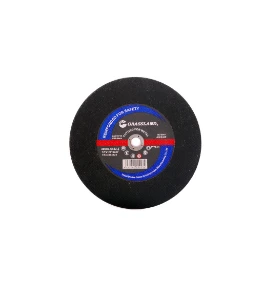Understanding the Importance of 230mm Grinding Discs
In the world of metalworking and construction, the grinding disc is an indispensable tool for achieving a smooth, polished finish on various surfaces. Among the many sizes available on the market, the 230mm grinding disc has gained popularity due to its versatility and efficiency. This article explores the features, applications, and benefits of 230mm grinding discs, highlighting their significance in both professional and DIY settings.
What is a 230mm Grinding Disc?
A 230mm grinding disc is a circular flat disc designed for use with angle grinders, specifically tailored to handle tasks that require material removal, smoothing, or shaping. The diameter of 230mm (approximately 9 inches) strikes a balance between maneuverability and surface coverage, making it suitable for a wide variety of applications. Typically made from abrasive materials such as aluminum oxide or zirconia, these discs can effectively grind metals, concrete, masonry, and even some types of plastics.
Key Features
1. Size and Compatibility One of the primary advantages of the 230mm grinding disc is its compatibility with most standard angle grinders. This allows users to utilize their existing equipment without the need for additional investments in specialized tools. The larger size also means it can cover more area in less time, increasing productivity.
2. Abrasive Material The choice of abrasive material in the disc determines its performance and longevity. For instance, zirconia discs are particularly favored for their durability and effectiveness on harder metals, while aluminum oxide is a more economical choice for softer materials.
3. Type of Bonding Grinding discs come with different types of bonding agents that affect their rigidity and wear characteristics. Resin-bonded discs are popular for their flexibility and resistance to heat, making them ideal for a variety of applications.
Applications
The applications of 230mm grinding discs are diverse. They are commonly used in
grinding disc 230mm

- Metal Fabrication In workshops, professional metalworkers utilize these discs to prepare metal surfaces for welding or to smooth out rough edges, ensuring a professional finish that meets industry standards.
- Construction Builders use 230mm discs to cut and shape concrete, brick, and masonry. They're particularly useful for tasks such as cutting concrete slabs or resurfacing rough surfaces.
- DIY Projects For home improvement enthusiasts, a 230mm grinding disc is an essential tool for both small and larger projects. Whether it's refurbishing old furniture or performing basic carpentry work, these discs can enhance efficiency and save time.
Benefits
1. Enhanced Efficiency The larger diameter of a 230mm grinding disc means that users can achieve more significant results in shorter time frames compared to smaller discs. This translates to increased productivity, especially in professional environments where time is money.
2. Versatility With the ability to work on various materials from metal to concrete, the 230mm grinding disc is a versatile addition to any toolset, suitable for different tasks and industries.
3. Cost-Effectiveness Although the initial investment may be higher compared to smaller discs, the longevity and efficiency of the 230mm disc can result in lower costs over time, as fewer replacements are needed.
Conclusion
In conclusion, the 230mm grinding disc is an essential tool in the arsenal of both professionals and DIY enthusiasts. Its combination of size, efficiency, and versatility makes it a go-to choice for a vast range of applications. Whether you are involved in metal fabrication, construction, or personal projects, investing in a quality 230mm grinding disc can significantly enhance your work's quality and efficiency. As with any tool, choosing the right type of disc for your specific needs will help ensure optimal performance and satisfactory results. Thus, understanding its features and applications can lead to more successful outcomes in all your grinding tasks.
Post time:Dec - 12 - 2024

















